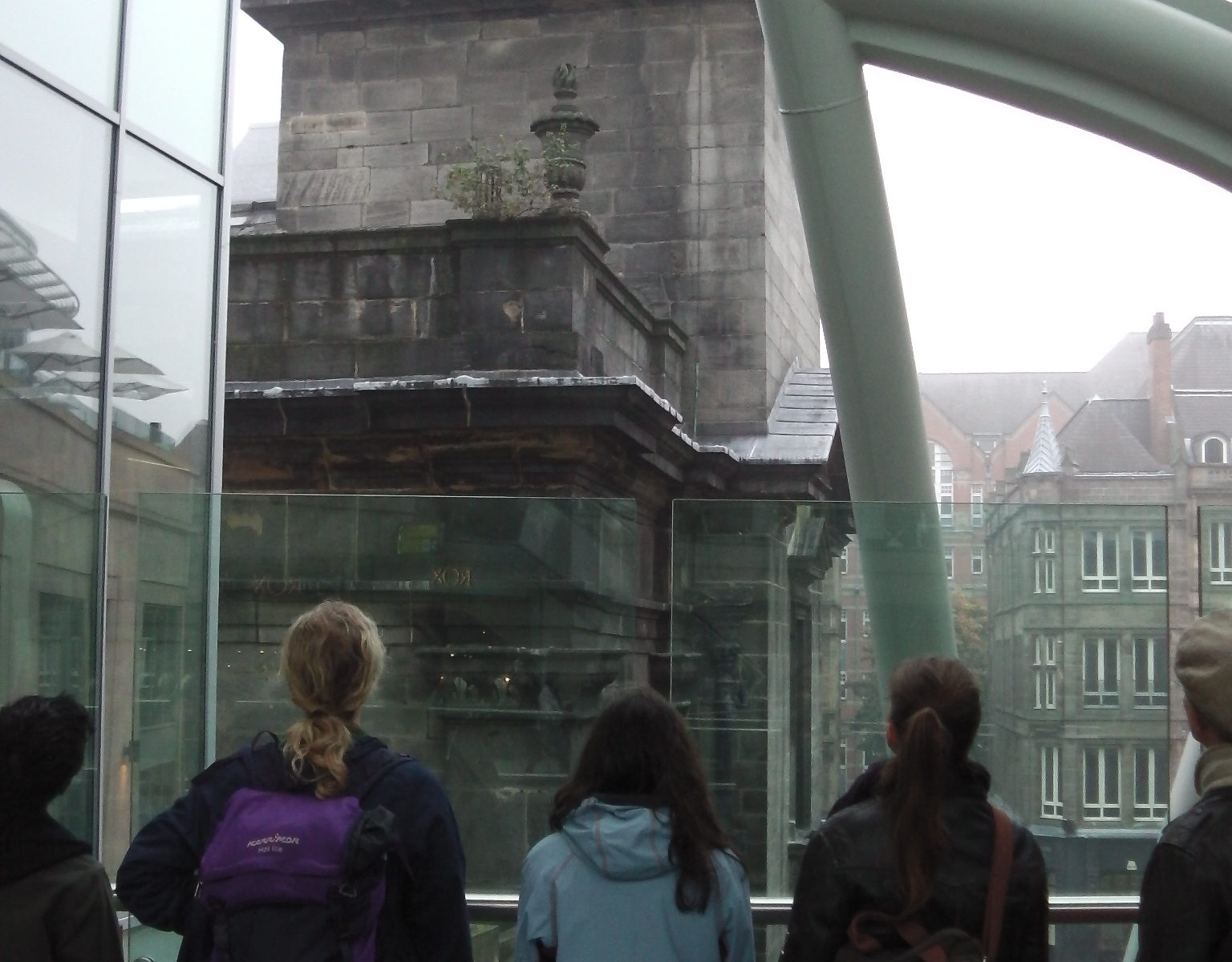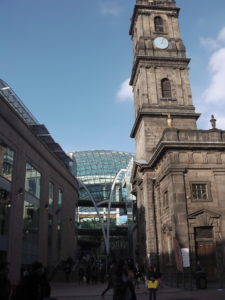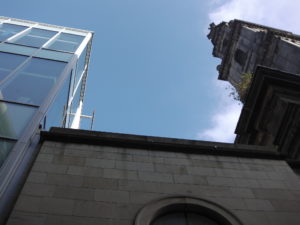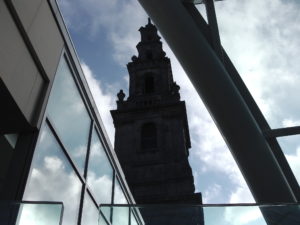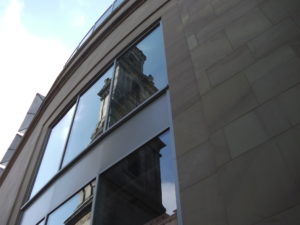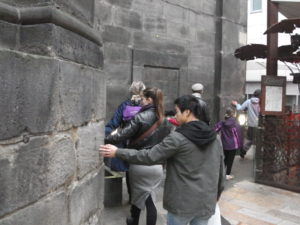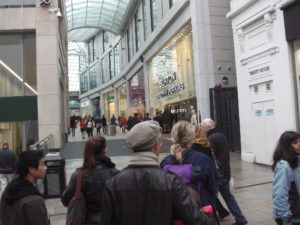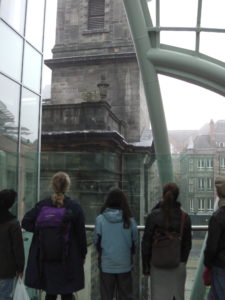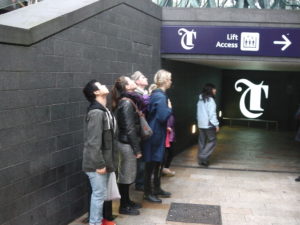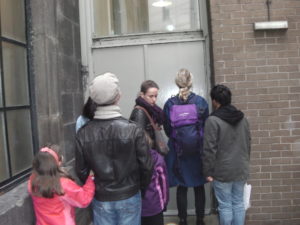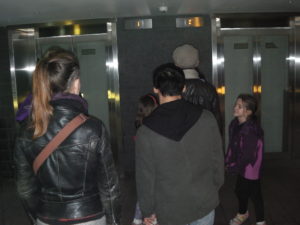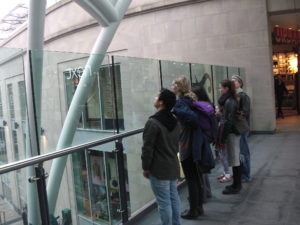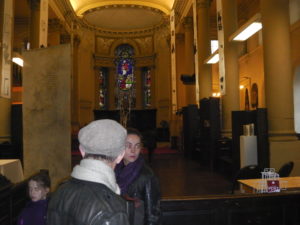The walk attempted to expose and explore a point of tension between two buildings: The Holy Trinity Church and Trinity Shopping Center in Leeds. Leeds city center is being filling with shopping centers for the past few years even though it already had many, whilst it lacks green and open spaces to rest from the consumerist activity. The Holy Trinity Church was built in the 1700s, until few years ago the church had an open space around it and it was possible to circumnavigate the building. It’s location near the pedestrian shopping area and the train station would have made a perfect spot for a green area and/or a playground. In 2013 the space around the church was instead filled with yet another shopping center, which completely attaches itself to the church suffocating it and making it impossible to circumnavigate.
The points of tension I noticed and I wanted to highlight were the points at which the access to the back of the building have been blocked by the new building and the contrast between the imposition of this new ‘church’ of consumerism against the old spiritual ‘church’.
Public space was bought and occupied to maximize retail space. The city is favoring profitable space over qualitative space; space of consumption over space of sociability, creativity and imagination. Space is being filled and compressed. Filling the gaps and closing up the in between spaces disrupts flow, creating tension. In between spaces allow flow and release. Organisms need space to ensure their vital movement flow.
As a dance artist and I am interested in embodied experience and how this informs and becomes a model for everything else we do and make. How do we perceive and experience spatial tension? Can we embody it, traverse it, highlight it, confront it, embrace it, release it, and even dissolve it? Can fixed structures like urban architecture be malleable? If we can’t change a fixed structure how can we create malleability within and around it?
But what does it mean to create more malleability? It might mean creating a shift of flow and purpose; a new experience that might bridge the two buildings and propose a different activity to the one imposed by the architecture. The walk attempted to subtly reclaim the once public space; we allowed ourselves not to join in with the shopping activity and instead to slow down, be silent, listen, observe, imagine and enjoy the surroundings.
The walk had two rules: to be in silence and follow and copy the leader (following my gaze, when I stop, my pace). To begin I guided a simple physical exploration: tensing all the whole body and then releasing; then facing a partner and pushing against each others hands playing between the amount of pressure and release.
I ‘choreographed’ the walk in a way that would highlight the architectural point of tension whilst exposing different layers and types of tension.
We noticed shifts between tension and release in the environment; our silence highlighted shifts in aural special perception through space. There were moment of building up of tension, like when we stood with our faces right up to a locked door or window (this also speaks about how we relate to things that move and create flow as opposed to immoveable things that stop flow), or coming up towards a dead end route and being able or not able to open the door to go through.
To circumnavigate the building we had to go through several doors. At the back east side of the church there is now an elevator into the shopping center. We had to go through an M&S shop in order to reach the other side of the church. When we arrived on the other side we stood in front a locked door that blocks the access to the back of the church. This highlighted also how public spaces and public access gets privatized, reshaping our accessibility and the coordinate and flow of a place.
We emphasized slowing down, listening, drifting and observing in a space dominated by noise and activity, a contemplative walk that reflected the contemplative nature of the church. In not participating in what other people were doing we were proposing a different purpose for the building. Moments of stillness in a busy place shift its flow, highlighting its nature. The walk might be an attempt to propose malleability between the two buildings. With collaboration between the institutions it could evolve to propose flow and connection between the two places.

